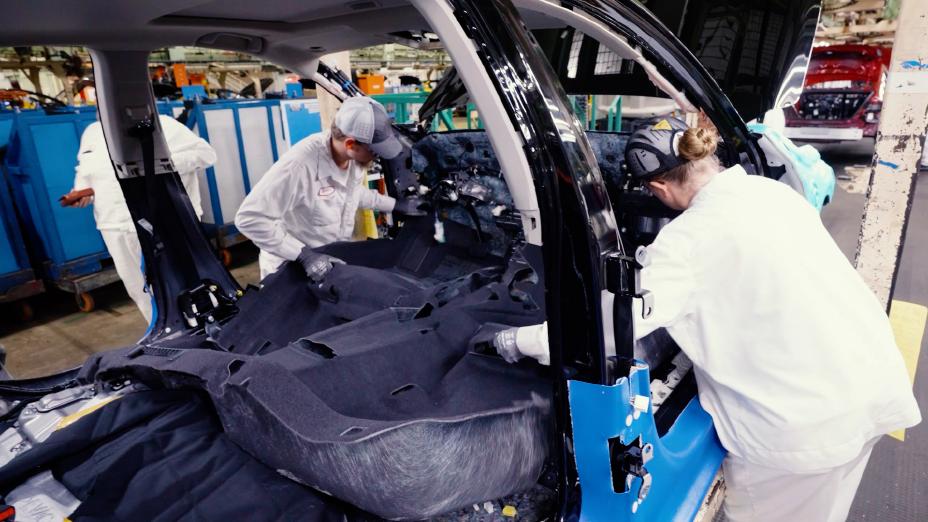
Recycled Honda Uniforms Find New Utility in Vehicles
Honda associates put a lot into the products they make, now including the shirts right off their backs. It is advancing a recycling initiative that takes uniforms worn by associates at its U.S. manufacturing and R&D facilities and transforms them into sound-absorbing insulation for use in Honda and Acura automobiles. This program diverts approximately 45,000 pounds of uniforms from reaching landfills each month as Honda works toward its commitment to use 100% sustainable materials in its products in the future.
Honda has established a global “Triple Action to Zero” approach, with the goal of achieving carbon neutrality for all products and corporate activities, use of 100% clean energy and resource circulation (100% sustainable materials), by 2050. Achieving that goal – which targets zero environmental impact – will require innovative solutions, including how Honda sources materials for new products by recycling and reusing material from end-of-life vehicles.
“To achieve our Triple Zero goal of 100% sustainable material use, we need to take every possible opportunity to recycle materials at end of life for reuse in our products, thereby minimizing our utilization of virgin materials,” said Negar Gilsinger, manager of Resource Circulation for American Honda Motor Co., Inc. “By maximizing end-of-life material recycling, we are giving our uniforms a second life in Honda and Acura vehicles.”

Transforming Uniforms into Insulation
Honda associate uniforms that are cleaned by uniform suppliers – Aramark, at Honda Indiana and Ohio facilities, and Cintas Corporation, at Alabama and North Carolina facilities – are evaluated after washing. If the uniforms are undamaged, they are sent back to associates to wear. When uniforms are designated for reuse in Honda and Acura vehicles, they are baled and sent to Leigh Fibers, which specializes in reprocessing and custom-blending fiber-based materials.
At Leigh Fibers’ facility, the uniforms are shredded into material that meets the required fiber grade for use as vehicle insulators. Zippers and buttons from the uniforms are first extracted and collected so that no metal or plastic goes through the shredding process. Then the material gets blended into mixed fibers and tested to ensure the fiber material meets the fiber length requirements. The newly reprocessed fibers are then packaged and delivered to insulation supplier UGN.
Expanding Recycled Materials in Vehicles
The uniform recycling program builds on longstanding commitment to reduce waste and incorporate higher recycled content in Honda and Acura vehicles. This includes working with suppliers to transform post-industrial textile scrap, such as fibers from denim, into vehicle insulation/absorption material. In collaboration with UGN, Honda annually reuses approximately 2,800 tons of recycled post-industrial textile waste – equivalent to 5.6 million pairs of jeans – and 3,000 tons of post-consumer PET (polyethylene terephthalate) bottles – equivalent to 6 million water bottles – for vehicle sound-absorbing insulation.
Other approaches to using sustainable materials in Honda and Acura vehicles have included soybean-based foam for vehicle headrests, recycled plastic water bottles and recycled Honda car bumpers for wheel liners, plant-based material for the seat fabric in the 2019 Acura RDX and Clarity Plug-in Hybrid vehicle, and processed volcanic rocks for the roof liner in the 2003 Honda Element. To learn more about Honda’s Triple Action to Zero approach and the concept of resource circulation, read Our Perspective, “We Have Set a Great Big Goal: Nothing.”

